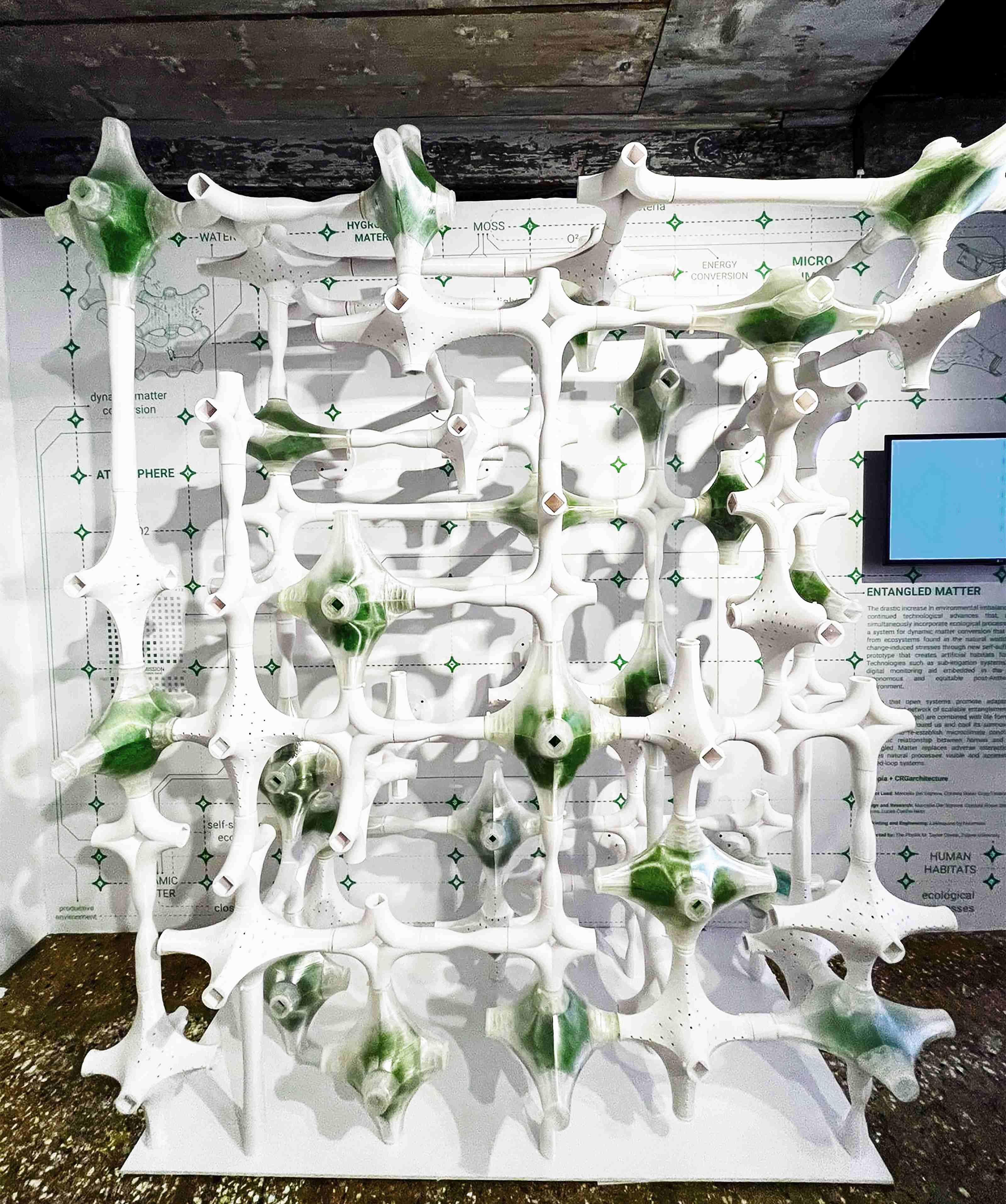
Date
2023
Location
Venice, Italy
18th Venice Biennale - Architecture Biennale at the Europen Cultural Centre “Time- Space-Existence” exhibition
Date
2023
18th Venice Biennale - Architecture Biennale at the Europen Cultural Centre “Time- Space-Existence” exhibition
The drastic increase of environmental imbalances caused by resource extraction, mass production and the insatiable need for consumption inevitably leads to the destruction of our environment. This creates the need for continued technological advances that, motivated by nature, visualize and productively utilize the necessary convergence with existing ecological processes. ‘What is entanglement’ [source material here, quote]
In an effort to symbiotically and productively merge natural cycles with human habitats, Entangled Matter is a modular system for dynamic matter conversion. The project incorporates concepts from natural ecosystems to remediate climate change-induced stresses through new self-sufficient ecologies.
Aware that open systems promote adaptation, we propose a combinatorial network of scalable entanglements, where hygroscopic materials are combined with organic life forms to filter the air around us and cool our surroundings through natural processes in order to re-establish healthy microclimatic conditions. Allowing for a symbiotic relationship between human and non-human species, Entangled Matter replaces adverse interactions and consciously allows for direct access to make natural processes visible and accessible through closed-loop systems.
With all parts easily and quickly manufactured and manually assembled, different aggregations of performative and structural elements can flexibly generate different scales of intervention - pavilions, canopies, facade units, coral nurseries, micro-agronomy structures, and various other configurations. Within this process Entanglement starts from a condition of co-dependency: modular clusters, primarily configured out of five differently programmed 3d-printed ‘capsules’ with specific performative and structural functions, can be aggregated into an infinite matrix to harvest energy and filter air - an act of remediation while creating new self-sufficient ecologies and microclimates. Absorptive materials (hydrogels) harvest water from the air to provide matter for bacteria and vegetative species (moss, microalgae) to grow, which in turn filter air through photosynthesis, produce energy to power internal sensors and external sources and cool the surrounding through water evaporation.
Additionally, the modular components’ material, through advanced 3d-printing technologies, neutralize harmful gasses contained in the surrounding air.
As cities have the power to initiate systemic change, human activity, merged with natural systems, can become ecologically beneficial: incorporating natural cycles into human habitats through technologies such as sub-irrigation systems, built-in sensors, and digital monitoring can create autonomous and equitable post-anthropocentric environments, enabling the growth of vegetative productive species informed by natural complexity and functionality. Entangled Matter enables such symbiosis, performing at the human scale and demonstrating new models of urban inhabitation.
Keywords: Environmental imbalances, modular system, self-sufficient ecologies, symbiotic relationship, microclimates